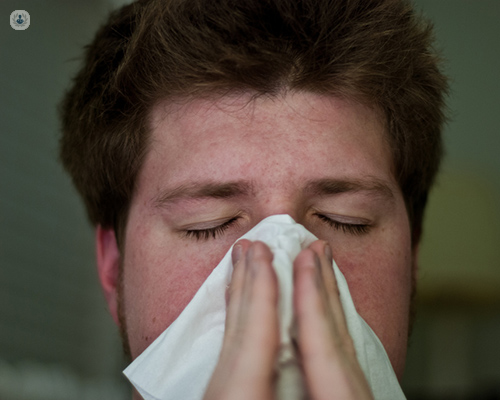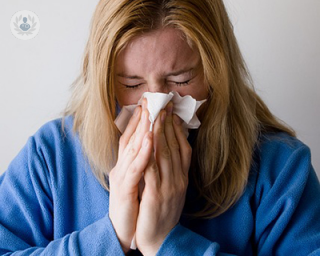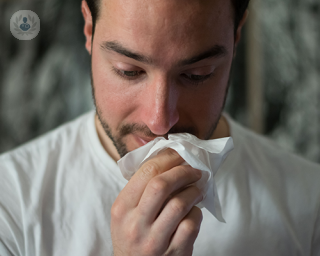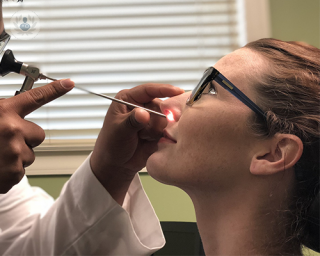Postnasal drip
Mr Pavol Surda - Otolaryngology / ENT
Created on: 10-23-2019
Updated on: 04-19-2023
Edited by: Conor Lynch
What is postnasal drip?
Mucus is produced by glands found in the throat, nose, and airways. When these glands produce excess mucus, it drips down the back of the throat. This build-up of mucus can become thick and cause discomfort, a condition known as postnasal drip. Postnasal drip is a very common occurrence and affects almost everyone at some point in their lives.

What causes postnasal drip?
The body’s immune system produces this excess mucus to fight off infections by moistening areas to trap and kill the foreign invaders, such as viruses and bacteria. Usually, mucus mixes with saliva and drips down the back of your throat throughout the day without you even realising. When this mucus becomes too thick, it causes discomfort and annoyance for some people.
There are a number of reasons why the glands may produce excess mucus, with the main ones being:
- the common cold or flu
- allergies such as hay fever
- sinus infections
- a foreign object stuck in the nose
- a deviated septum
- medications
- spicy food
- chemical cleaning products or perfume smells
- environmental fumes
- cigarette smoke
What are the main symptoms?
The main symptom people typically experience is the sensation of mucus dripping down the back of the throat. This can sometimes be accompanied by other symptoms such as:
- the feeling of nausea due to added mucus in the stomach
- a cough, especially at night
- bad breath
- sore throat
- a tickle in the throat
- a constant need to clear the throat
How is postnasal drip treated?
Most of the time, postnasal drip clears on its own. Rarely, complications occur, such as further infection of the sinuses, but you should treat the condition to avoid complications and relieve symptoms.
Over-the-counter medication is the most popular form of treatment. These include:
- decongestant medication – this helps to dry out the mucus.
- antihistamines – try to combat allergies from pollen or house dust by taking this medication.
- mucus-thinning medication – some people find relief in medication aimed at thinning the mucus.
- nasal sprays – saline sprays use salt water to wash away the mucus build up. They also help clear blocked airways.
What are some effective home remedies for postnasal drip?
Home remedies are also popular and effective at treating postnasal drip. Some people find their mucus build-up gets worse overnight, so propping up the head slightly higher than the rest of your body can prevent it. Your body loses fluid when you have postnasal drip, so drinking plenty of liquids can help to thin the mucus and keep it flowing. To combat postnasal drip caused by allergies, you could consider using anti-allergy covers on your bed, wash all your sheets and pillows in hot water and dust and vacuum more often.
When should I see a doctor for postnasal drip?
If your mucus is discoloured and hasn’t cleared up after 10 days, you should see a doctor and get a diagnosis. Having discoloured mucus, as well as a fever, might be a sign of a viral or bacterial infection and you may need the doctor to prescribe medication to help fight it. If you start wheezing, find it difficult to breathe, or you see blood in your mucus, you should seek prompt medical advice.
Which specialist treats postnasal drip?
An otolaryngologist treats postnasal drip.
Is postnasal drip normal?
It is very normal. In fact, the production of mucus is an essential function for each and every one of us. Not only does it fight off infections, but it helps lubricate the throat.
Who is most likely to have postnasal drip?
Everyone can be affected by postnasal drip, as it is extremely common. However, people who smoke and who have been diagnosed with chronic sinusitis are at a higher risk of experiencing postnasal drip.








